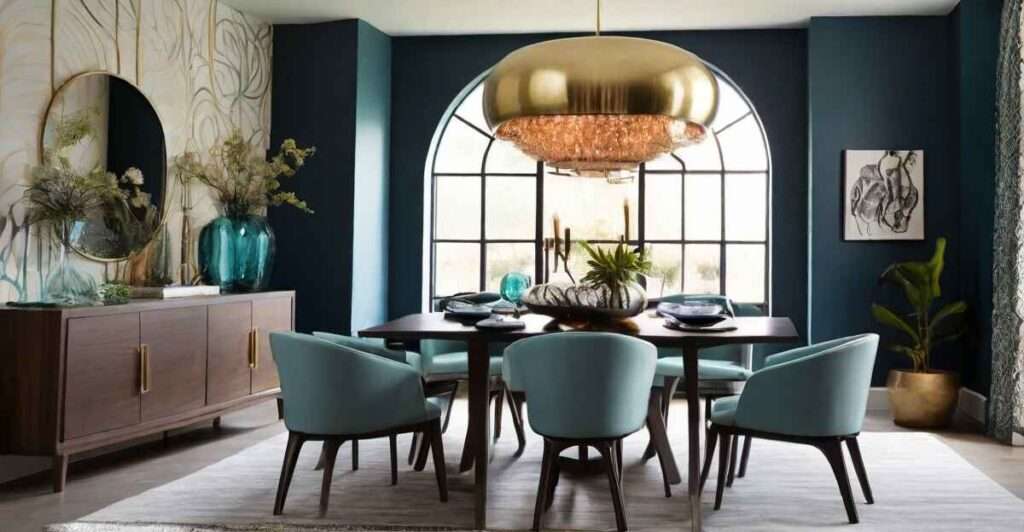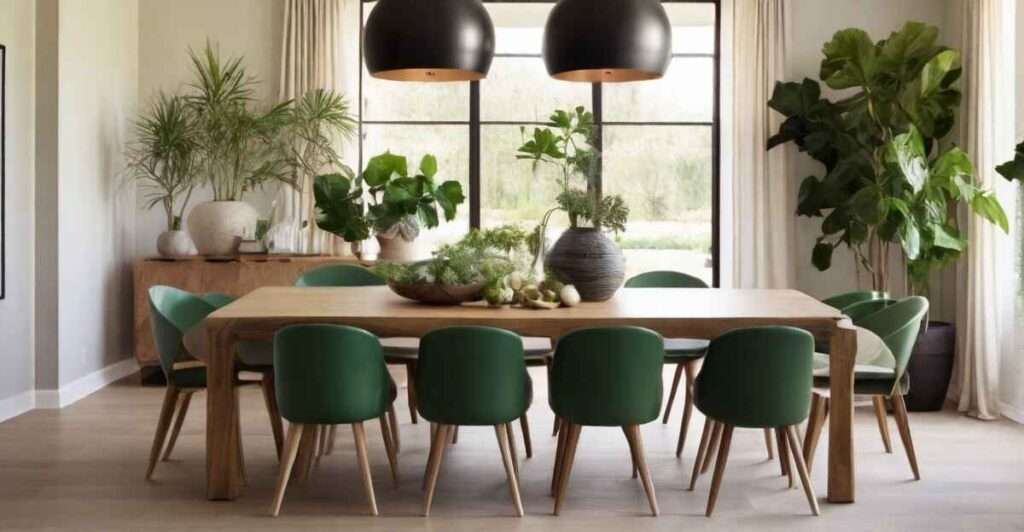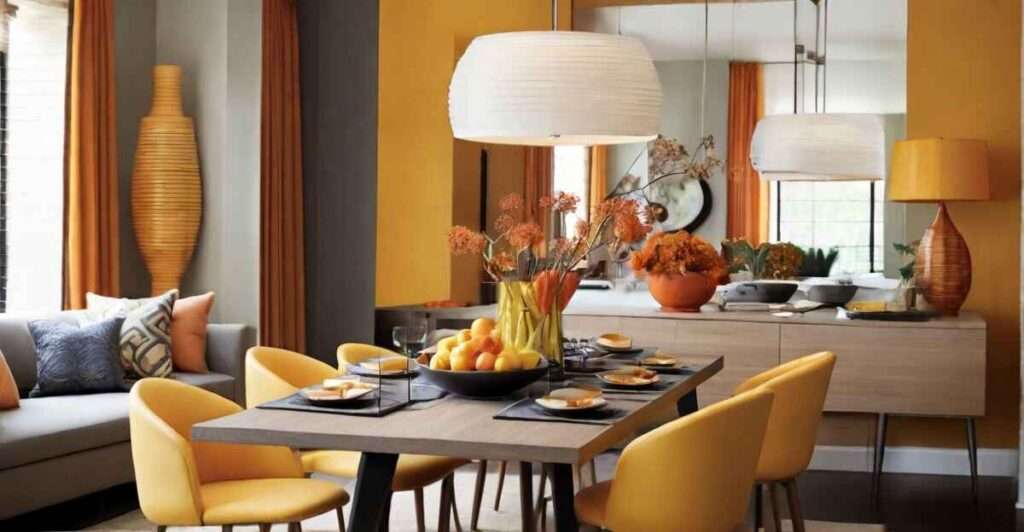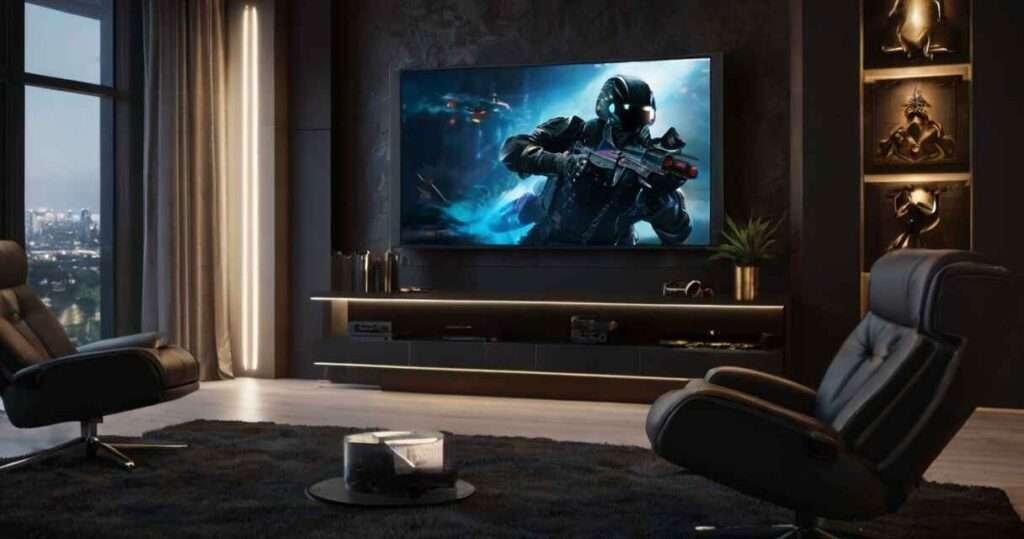Creating a good layout for your dining room combo is really important. It helps your space work well and look nice. If you’re putting your dining area together with your living room, kitchen, or both, having a layout that flows smoothly is key. It helps you use the space wisely and makes your home look better. In this article, we’ll look at some ideas to help you make the best dining room combo layout.
I. Understanding the Importance of Effective Layout Design

The layout of your dining room combo plays a crucial role in how you interact with and utilize the space. A well-designed layout maximizes functionality, promotes better traffic flow, and creates a harmonious balance between different areas within the room. Whether you’re entertaining guests, enjoying family meals, or simply relaxing, a thoughtfully planned layout can greatly enhance your overall dining experience.
II. Tips for Maximizing Space in a Dining Room Combo

When it comes to maximizing space in a dining room combo, there are key strategies to consider:
1. Utilizing Multifunctional Furniture
In a combined dining and living space, opt for furniture pieces that serve dual purposes, such as extendable dining tables or sleeper sofas. This allows you to make the most of limited space without sacrificing comfort or style.
2. Strategic Placement of Lighting Fixtures
Proper lighting is essential in any room, especially in multifunctional spaces. Incorporate a mix of ambient, task, and accent lighting to create a layered lighting scheme that enhances the functionality and ambiance of the room.
III. Making Spaces Easy to Move Around

Making your dining room combo layout easy to move around means setting up furniture and pathways so it’s simple to walk through. This creates a friendly and connected feeling where each part of the room flows smoothly into the next. By thinking about where to put furniture and how people will move, you can make the layout work well for everyone, making it easy for you and your guests to enjoy every corner of the room.
IV. Using Rugs to Mark Different Areas

In a room with an open layout, rugs help show where one area ends and another begins. By putting rugs in the right spots, you can show separate spaces for dining, relaxing, and having fun, giving each part its own special spot. Pick rugs that match your style and colors, making it clear where each part of the room starts and ends. This not only makes the room look nice but also helps you keep things organized and arranged well.
V. Matching Colors All Around

When you’re planning your dining room combo layout, picking colors that go together is really important. This helps the room look like it belongs together while still letting each part have its own look. Choose colors that go well with each other and show off what you like, making a backdrop that makes the whole room look good. Whether you like bright colors or softer ones, using matching colors everywhere in the room makes everything feel balanced and tied together, making your dining room combo layout stand out.
VI. Furniture Arrangement Ideas for Different Room Sizes

The ideal furniture arrangement for your dining room combo will depend on the size and layout of your space. Here are some ideas for maximizing space in different room sizes:
1. Small Dining Room Living Room Combo
In a small space, opt for compact furniture pieces and multifunctional storage solutions to maximize functionality without overcrowding the room.
2. Medium-Sized Dining Room Kitchen Combo
In a medium-sized space, consider creating a cohesive design by using complementary furniture styles and coordinating color schemes.
VII. Accent Walls and Statement Pieces

Add visual interest and personality to your space with accent walls or statement pieces such as bold artwork, vibrant upholstery, or eye-catching light fixtures. These elements can serve as focal points that draw the eye and infuse the room with character and charm.
VIII. Greenery and Natural Elements

Bring the beauty of the outdoors inside by incorporating greenery and natural elements into your dining room combo. Whether it’s a potted plant, a vase of fresh flowers, or a natural wood accent piece, these touches of nature can add warmth, texture, and vitality to your space.
IX. Common Mistakes to Avoid in Dining Room Combo Layouts

While designing your dining room combo layout, it’s important to avoid common pitfalls that can detract from the functionality and aesthetic appeal of the space.
1. Overcrowding the Space
One common mistake is overcrowding the space with too much furniture or accessories. Instead, focus on selecting a few key pieces that serve both practical and aesthetic purposes, allowing plenty of room for movement and circulation.
2. Neglecting Proper Lighting
Another mistake is neglecting proper lighting, which can result in a dull or uninviting atmosphere. Be sure to incorporate a variety of lighting sources, including overhead fixtures, task lighting, and accent lighting, to create a well-lit and welcoming environment.
Conclusion
To make a good dining room combo layout, you need to think about space, how it works, and how it looks. If you follow these tips and don’t make common mistakes, you can make a space that looks nice, works well, and shows off your style.
Top FAQs on Dining Room Combo Layout Ideas
To maximize space in a small dining room living room combo, opt for multifunctional furniture pieces, utilize vertical storage solutions, and keep the color palette light and airy to create a sense of openness.
You can define separate zones in an open-plan dining room combo by using area rugs, pendant lighting, room dividers, or furniture arrangement techniques such as back-to-back sofas or floating shelves.
You can incorporate greenery into your dining room combo layout by adding potted plants, hanging planters, or a vertical garden. Choose low-maintenance plants that thrive in indoor environments and complement your overall design scheme.
Common lighting mistakes to avoid in a dining room combo include relying solely on overhead lighting, neglecting task lighting in key areas such as the dining table or kitchen counter, and forgetting to layer lighting for ambiance and functionality.


